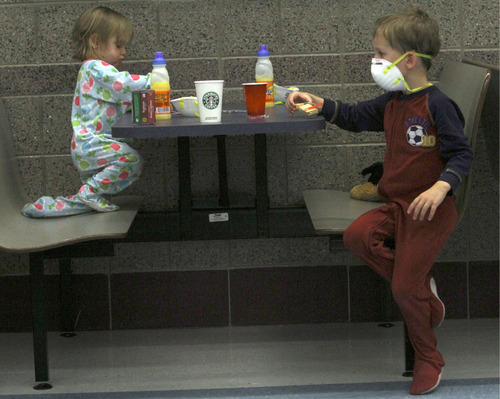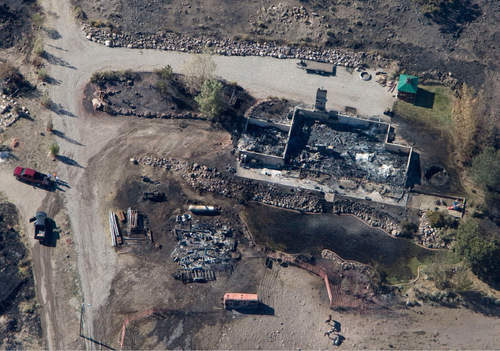This is an archived article that was published on sltrib.com in 2010, and information in the article may be outdated. It is provided only for personal research purposes and may not be reprinted.
Sunday's "Machine Gun" blaze was not the first time wildfire has sparked alarm in communities surrounding Camp Williams.
For the past two decades, military and civilian officials have recognized the threat from Camp Williams. The "Machine Gun Fire" is the fifth such event in the past 15 years to threaten residents in south Salt Lake County and northern Utah County.
Protocols have been developed by the National Guard to mitigate those hazards that are exacerbated by quick-burning fuels, such as grass, brush and scrub oak, that are found at the military installation.
From 1992-1997, Michael Jenkins, a Utah State University professor of wildland fire ecology worked at Camp Williams to develop a fire management plan. By then it had become clear that "fires are associated with military training," he said.
Among other things, fire breaks were cut, less flammable grasses and brush were planted, and goats were brought in to eat fire-prone vegetation.
But those efforts weren't enough, said Lt. Col. Hank McIntire, when "a perfect storm" of hot wind and dry brush sent a wall of fire toward Herriman on Sunday afternoon.
Before the blaze marched into Herriman, the National Weather Service issued a "red flag" warning — an alert calling attention to extreme wildfire danger — on Saturday and again on Sunday.
The wildfire danger was clear: The grass and brush were tinder dry. The relative humidity was below 10 percent. Temperatures were heading above 90 degrees. Winds were gusting from the south.
Nonetheless, the Utah National Guard proceeded with .50-caliber automatic weapons training, as scheduled Sunday. Shrapnel ignited brush and embers went swirling as a wall of fire swept northward into Herriman and destroyed three homes and led to the evacuation of hundreds of others.
Although the guard admits sparking the blaze, a spokesman said Monday morning that "protocols were followed" to mitigate the possibility of fire. And no highly flammable tracer rounds were used in the training.
But Monday afternoon Maj. Gen. Brian Tarbot said his troops were at fault for not recognizing that the Weather Service had issued the warning.
Gov. Gary Herbert also has promised a full review of all training exercises and fire suppression protocols at Camp Williams.
Herriman Mayor Joshua Mills said Monday afternoon that Camp Williams "has always been a good neighbor."
"We're not here to point fingers," he said. "We're here to make sure this never happens again."
Tribune reporters Brian Maffly and Matthew D. LaPlante contributed to this report. —
Other fires that started at Camp Williams
2006 • A 500-acre blaze started on the artillery range and forced the evacuation of about 50 homes in Herriman.
2003 • A spark from a welder's torch ignited a 1,500 acre fire that raced toward Eagle Mountain and Saratoga Springs.
July 2001 • Flames threatened homes in Riverton and Bluffdale after guardsman attempted to destroy smoke grenades.
1995 • Salt Lake County firefighters were called to help contain a 5,000-acre fire ignited on the artillery range that burned toward Bluffdale.







